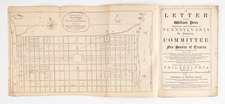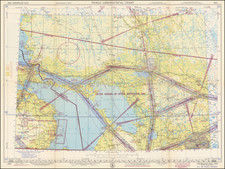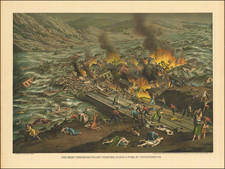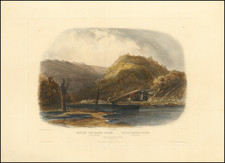"The First Map of the Delaware River"-- Burden
These two maps focus on small regions in North America, the left-hand map showing Swedish claims in New Jersey, and the right-hand map showing Danish claims around the Hudson Bay. Detail is limited, but these appear to be the earliest maps to focus on their respective areas.
The map of New Jersey focuses on the Zuit R. which would later become the Delaware. This name of the river, meaning south in Swedish, is the corollary to the river now known as the Hudson, which was referred to as the North River in the 17th century. Several Swedish and Dutch colonies are seen on the map, including Nassau, Gotemburg, Christina, and Elsembourg. The representation of this area as Swedish is anachronistic, as the region had seen a Dutch takeover in 1655, prior to even the first state of this map.
The map of New Denmark has even less detail to it, not unlike present-day maps of the region. Port Nelson is the only named feature in the area, and much of the land is labeled "little known lands." The Christian Sea, named after Danish King Christian IV, occupies much of the map.
Scandinavian Colonies in North America
This work focuses on two colonial powers which are often overlooked in North American history. However, each colony shown had a fascinating, if short-lived, history which exemplified the difficulties faced by minor colonial powers.
New Sweden only existed from 1638 to 1655, and was the only remotely successful colony to be founded by the Swedish South Company. Their first settlement was Fort Christina, built at the present-day location of Wilmington, Delaware. The colony grew over time, establishing Fort Elfsborg ["Elsembourg"] and Fort Gothenburg, both visible on this map. The nearby Dutch colonies felt threatened by the rapid growth of New Sweden, and the Second Northern War served as a pretext for them to take over these lands.
New Denmark was even less successful than Sweden. This refers to a failed colonization attempt of the western Hudson Bay by the Danish explorer Jens Munk. Munk arrived in the bay in 1619 alongside sixty-five men and settled for the winter near the presently known Churchill River. Only three men, including Munk, would survive the spring return to Bergen. All of Munk's later journeys to reestablish the colony would be thwarted, and a permanent Danish colony was never founded in the region.
L'Ameriqve par P. Du Val Geographe du Roy
This map is originally from a single engraved sheet appearing alongside seventeen other maps in a work entitled L'Ameriqve Par P. Du Val Geographe du Roy. One map was devoted to the whole American continent, while the others focused on such areas as Newfoundland, the Caribbean, Patagonia, and Columbia. Two particularly notable maps come out of this work, the first of which is the map of California as an Island, which Burden notes "would make the part entitled Le N. Mexiqve the first map devoted so much to California." The second is the present map entitled La Nvle. Svede, for its importance as the purported first map of the Delaware. The map is intriguing for other reasons, including portraying the American holdings of such diverse colonial powers as Denmark, Sweden, and Holland.
This work was separately published, and neither Burden nor we are able to ascertain their purpose. The work appeared alongside similar charts of the four then-known continents.
This was printed as part of the second state of this work. Burden notes one example of the first state in Oxford, and two examples of the second state, one in the BNF in Paris, and one in a private American collection. An 1885 source also refers to this map being present in the BNF. An example was offered at auction in 2010, but it is uncertain if this was the same as one of the examples which Burden notes. We have been unable to locate any additional loose examples of this work outside of quarto format.
Burden dates the first state of the map to circa 1656 on the assumption that Duval used many of Sanson's place names from his 1650 and 1656 maps, but not from his 1657 Audience de Guadalajara.
Pierre Duval (1618-1683) was a French geographer, cartographer, and publisher who worked in Abbeville and Paris during the seventeenth century. He was born in the former city, in northeast France, before moving to Paris. Duval was the nephew of the famous cartographer Nicolas Sanson, from whom he learned the mapmaker's art and skills. Both men worked at the royal court, having followed the royal request for artists to relocate to Paris. In addition to numerous maps and atlases, Du Val's opus also includes geography texts. He held the title of geographe ordinaire du roi from 1650 and died in 1683, when his wife and daughters took over his business.











![A New and Exact Map of the Dominions of the King of Great Britain on ye Continent of North America . . . [Beaver map]](https://storage.googleapis.com/raremaps/img/small/101277.jpg)


